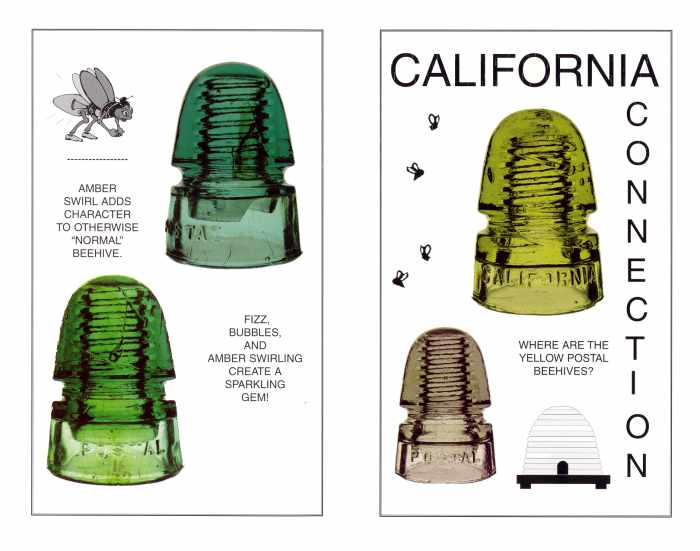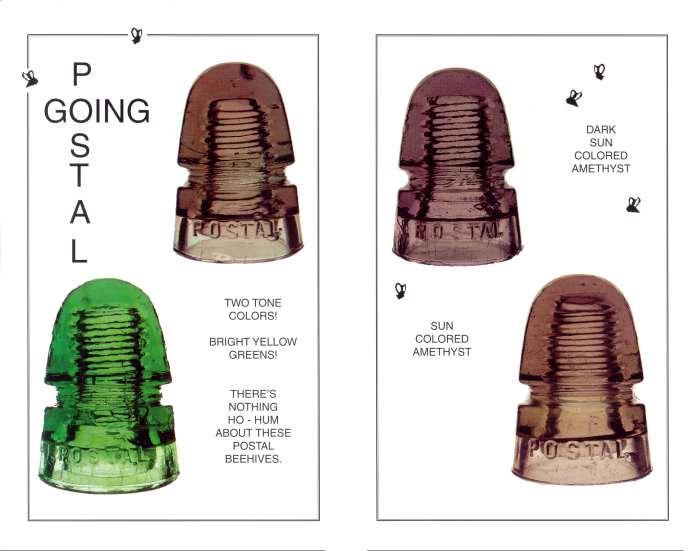POSTAL BEEHIVES
By Howard Banks
Reprinted from "Crown Jewels of the Wire", April 2003, page 30
Formed in 1881, the Postal Telegraph Company capitalized on the email
technology of its day. Telegrams were sent to destination offices, and then
mailed to private and business recipients. Going "postal" was routine
business for this telegraph company.
Using local mail delivery still made it
possible to transfer messages much faster than long distance mail. The concept
was an immediate success, and Postal went international in 1886 when it secured
a contract with the Canadian Pacific Railroad Company.
Postal had several styles
of insulators embossed with the company's name. Early in the company's history
Brookfield manufactured CD 138's; and the American Insulator Company made CD 156
& 156.1 's. Around 1910-1915, several companies manufactured the Postal
style beehive. These CD 145's have a wire groove slightly lower on the body of
the insulator, giving the insulators a distinctive sturdy appearance. Another
classic Postal design is the CD 210, a saddle groove insulator.
One of the
companies manufacturing Postal beehives was the California Glass Insulator
Company. California-made Postal's are found in many of the same colors as the
California insulators: sage green, purple, burgundy, and purple & sage two
tone. As you can seen on the following pages, some dramatic examples of Postal
beehives can be found.
California embossed insulators in yellow glass have been found in many CD
styles, although yellow CD 145's are scarce with only a few reported.
Nevertheless, if California made so many Postal beehives, is it possible there
could be a yellow Postal?
The Postal Telegraph Company went bankrupt at the end
of World War Two. While lines were salvaged in some parts of the country,
significant stretches were simply left to the elements. When I started
collecting in the late 1960's, one of the main sources of insulators was the
abandoned Postal line through Southern Oregon. Poles were still standing, some
places adorned with CD 208 California's. More commonly found were Postal,
California & Brookfield beehives, CD 153 48-40's, purple CD 154 Whitall
Tatum's, and 1870 dated Brookfield CD 133's.
Note: The Postal beehives shown
are from the collection of Tim Wood of Albany, Oregon. Pictures were taken by
Carol McDougald. Information on the Postal Telegraph Company can be found at
www.albionvision.com/history/communication/html


| 